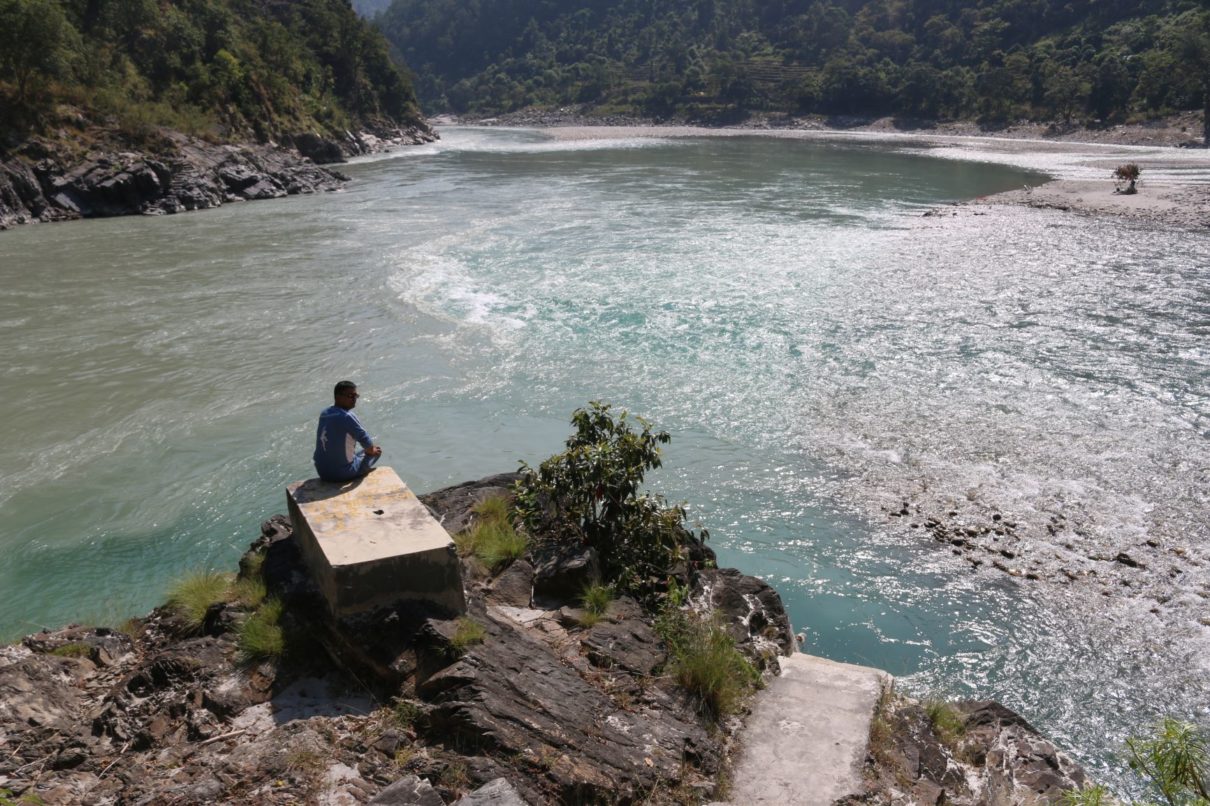After stiff climbs and thrilling downhills, we stopped at a teashop at Gauri Gaun. It was a little past 2:00 pm, and we felt like we could eat a horse. We ordered egg-veg-noodle soup—a double for Shishir. I looked up, and my eyes locked on a row of tied bunches of corncobs and onions hung to dry under a tin lean-to on the roof.
I could not resist asking the Tamang lady who was the owner of the place for a few onion bulbs with a striking auburn shade. I wanted some as a souvenir from the trip. Amused, the middle-aged Tamang lady took it as a compliment and grinned from ear to ear. If you love forests, I suggest you look no further and pack your bags and set off to Nagarjun or Shivapuri hills. Further, these woods are no less than a treasure trove if you enjoy bird-watching. These forests are home to more than 300 species of birds, including the rare Hoary-throated Barwing, White-throated Tit, and no less than the elusive Spiny Babbler (Kande Bhyakur in Nepali), an endemic species found only in Nepal. It was already 4:30 pm in the afternoon when we stopped at a tea shop at Sano Gaun. We felt we deserved some rest, a hot cup of tea, and a little refreshment. My pulse raced as I thought about the last leg of the trip—a 12 km stretch cutting across the dense Nagarjun forest, a haven for the residents of the wild. I had done that stretch some eight years back. It was close to 5:00 pm as we pedaled past the army checkpoint and entered the forest. Shishir led the way down the windy dirt road which was pitted and waterlogged. At 6.30 pm, darkness closed in, and we fixed the lights onto our handlebars. Then it rained. The long stretch of the forest seemed endless as we pedaled across the narrow motor track, tricky and dangerous as we navigated the many puddles and potholes in the beams of our lights. The rain only made it worse. Shishir led the way, and I stayed close behind. Often, we had to dismount in ankle-deep mud as our front tires got stuck. Thankfully, none of us had an accident though. I suddenly recalled a small conversation with a few army guys at the teashop at Sano Gaun. One of them had a hair-raising tale to tell. One late afternoon, on his way back from Balaju to report to duty at the barracks of Sano Gaun, the army chap suddenly froze. He had heard some rustling sounds. He turned around to check and his eyes fell on a full-grown leopard barely 15 feet away. As it turned out, it was stalking its prey—a deer foraging by the roadside. The deer must have caught the scent of the army man or heard the sound he made. It got spooked and dashed into the bush. And next thing he knew, the leopard had turned its piercing gaze upon him. The man knew turning around and bolting would only tempt the predator to pounce on him. The best thing to do was lock eyes with it, shuffle backward slowly for a few yards, then run hell for leather. He did not know how he made it to the barracks. It took him 20 minutes. At other times, it would take him no less than 40 minutes. After another 45 minutes through the pitch-dark forest, braving the drizzle and the tricky track, our mind-boggling ride ended at Mudkhu Bhanjyang. Shishir and I parted ways at the Balaju bypass. As I headed home, I kept thinking about our escapade from Mahesh Narayan hills to the verdant Nagarjun forest. It had, in all sincerity, taken my breath away. As poet and civil rights activist Maya Angelou rightly said, “Life is not measured by the number of breaths we take, but by the moments that take our breaths away.” [email protected]











